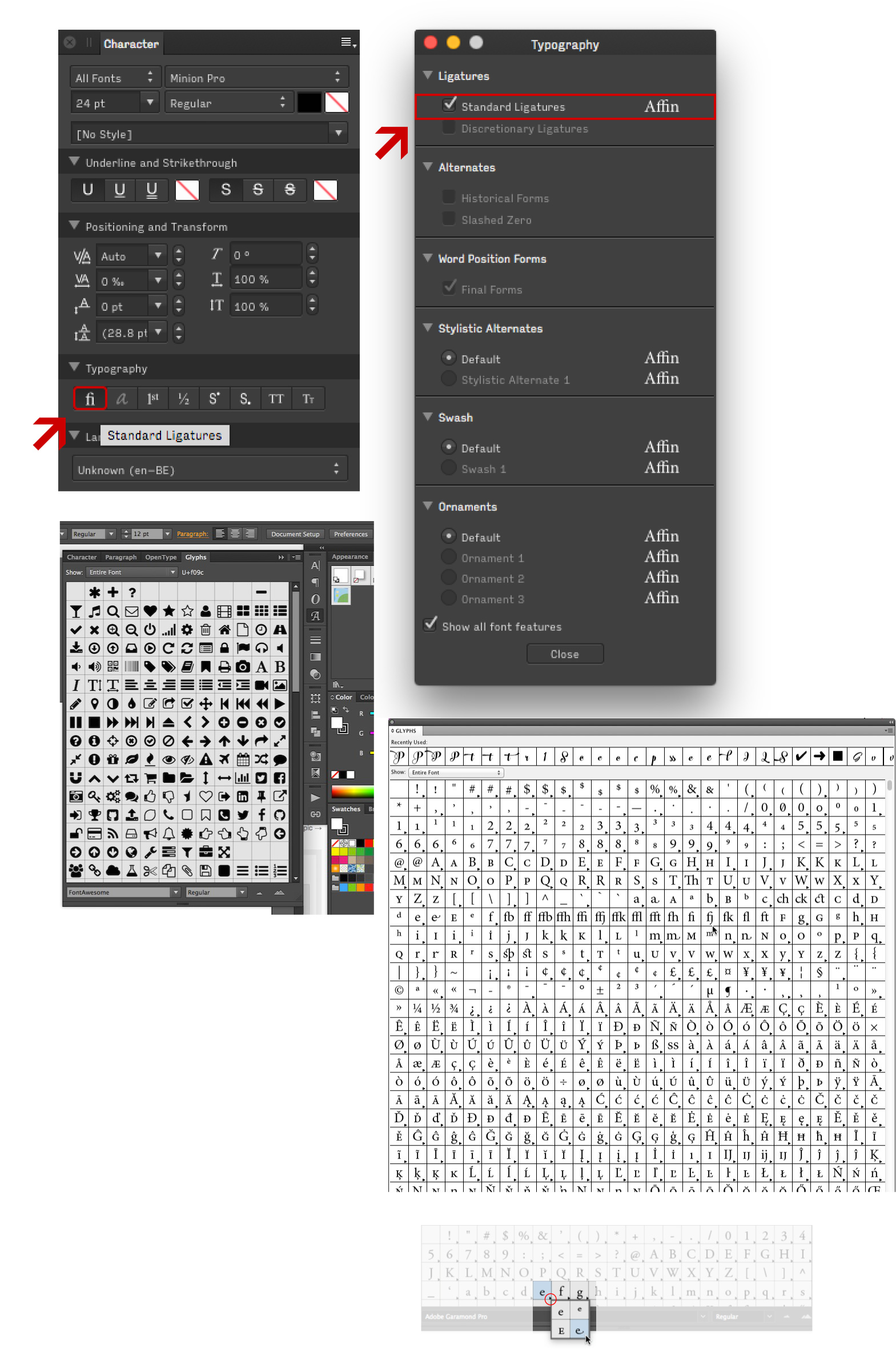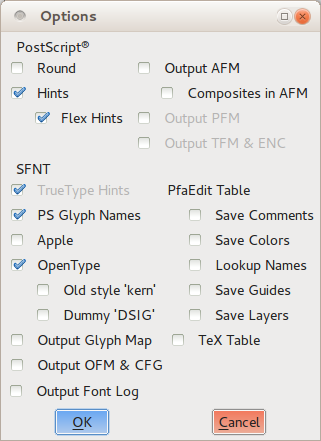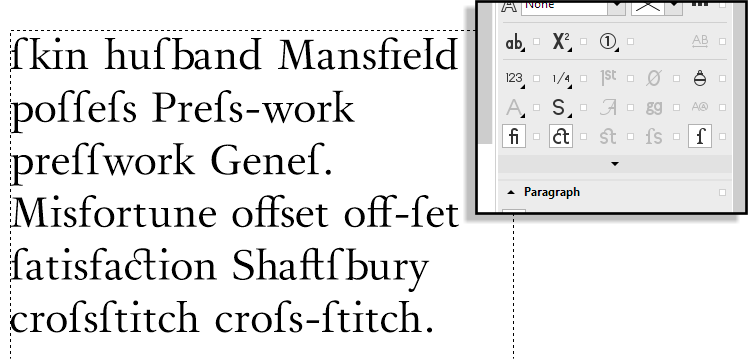

If you or your font program are at a loss, try Adobe’s glyph list for new fonts ( AGLFN) which lists more than 600 glyph names and their matching Unicode values. If you supply the correct glyph name (for example iacute) your font program usually knows what the Unicode for a glyph should be ( 00ED). Your letter Ä would use the descriptive glyph name Adieresis, and its Unicode value 00C4. What rules do I need to follow? Naming your glyphsĪ must for every well functioning typeface is properly named glyphs. Output: Lining Figures (lnum) switched on
#Otf font glyphs dont work code
Compare the results to the input and take a look at the exemplary feature code which is explained in detail further down: A favorite of many are or course, ligatures.Ĭhoose from the following list of features to see some typical applications. In many of the newer fonts, you’ll find various figure sets (old style, lining, super and subscript figures, …) which need to be controlled or small caps as well as alternative character shapes and fractions. Depending on which features you choose to activate (left), your output will change.

Top right: the Classes panel, shows the names of all your classes (left), their content (bottom right) and a visual representation (top right).īottom left: the OpenType panel, shows the names of your features (left), feature definitions (top right), and classes (bottom right).īottom right: the Preview panel in which you can test your features, shows a comparison of your input (top) and output (bottom). Top left: the font window with your glyphs. To see what happens look at the following comparison of input and output, (to tell the different glyphs in a sequences apart I’ve used a divider: |) Lastly, after every statement as well as at the end of the feature, place a semicolon. It always comes down to the same thing: substitute a single glyph or a sequence of glyphs by another glyph.Īssuming you have your glyphs in question already drawn ( f, i and the ligature glyphs called f_i and f_f_i), all you need to do is add some code to control the substitution, like this:įeature followed by liga, and repeated in the last line is the predefined name of the feature, the identifier that a program like QuarkXPress or InDesign needs in order to know which feature to look at when you choose «Ligatures», (see below for a comprehensive list of feature names and the features they trigger.) The sub statements - you can also write substitute - within the curly brackets tell the program that if the sequence of glyphs named f| f| i or f| i is found (in the feature statement the glyphs of a sequences are separated by a space), replace it by the glyphs named f_f_i resp.

Let’s take a look at a simple example that, like all OpenType features we’re talking about here, deals with the replacement of glyphs, called glyph substitution (short GSUB). Read on and find out that it’s really not difficult! All examples that we will discuss should be considered starting points, just to pique your interest.

We’ll start casually and work our way to more complex features and ideas. In this article we’ll give you a look behind the scenes of OpenType substitution features - a general rather than comprehensive overview as the subject is simply too vast. Whether you want your typeface to change the sequence of f|f|i into the appropriate ligature or want to use old-style figures instead of tabular, you’ll need to add features to your font - glyph substitution definitions - to make it happen.
#Otf font glyphs dont work how to
Simply adding a glyph with a ligature to your font doesn’t mean the program you’re using knows when or how to apply it. With these many sets of glyphs integrated in a single font, we are faced with the challenge of including definitions instructing the applications we're using when to show which glyph. We now design and produce OpenType fonts which can consist of thousands of characters - additional ligatures, various figure sets, small caps, stylistic alternates, … - referred to as glyphs. The Type1 format where 256 characters are assigned to keys on our keyboard, is becoming a thing of the past.


 0 kommentar(er)
0 kommentar(er)
